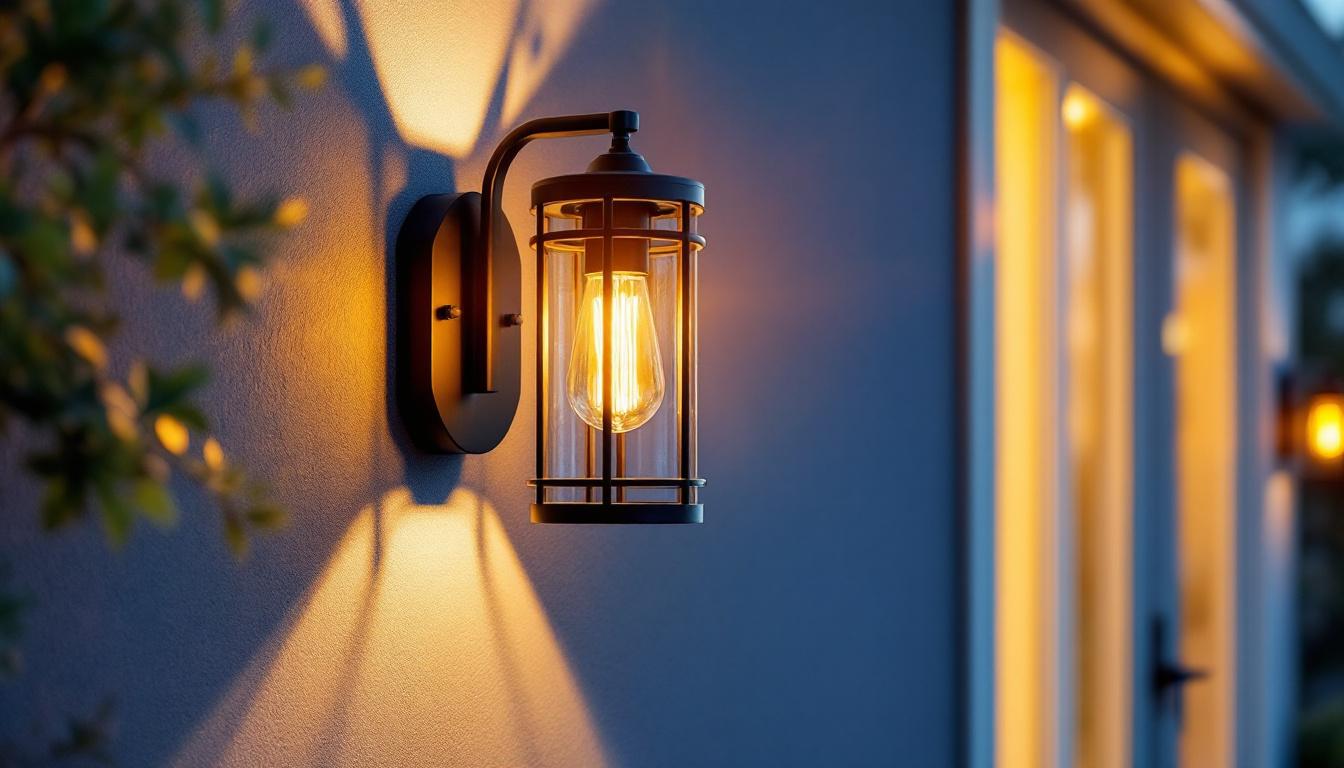
In the ever-evolving world of lighting design and installation, recessed lighting has emerged as a popular choice for both residential and commercial spaces. One of the most significant advancements in this area is the integration of motion sensors into recessed lighting systems. This innovative technology not only enhances energy efficiency but also improves user convenience and safety. For lighting contractors, understanding the benefits and applications of recessed lighting motion sensors can transform their approach to projects, ultimately leading to greater client satisfaction and increased business opportunities.
Recessed lighting motion sensors are devices that detect movement within a designated area and automatically control the lighting accordingly. These sensors can be integrated into various types of recessed fixtures, allowing for seamless operation and enhanced functionality. The primary purpose of these sensors is to provide illumination only when needed, thereby reducing energy consumption and extending the lifespan of the lighting fixtures.
At the core of motion sensor technology are two main types: passive infrared (PIR) sensors and ultrasonic sensors. PIR sensors detect changes in infrared radiation, which is emitted by warm objects, such as humans and animals. When someone enters the sensor’s range, the light is activated. On the other hand, ultrasonic sensors emit high-frequency sound waves and measure the reflection of those waves to detect movement. This technology can be particularly effective in larger spaces where PIR sensors may struggle.
Both types of sensors can be programmed to adjust the lighting based on various factors, such as the time of day or ambient light levels. This adaptability makes them ideal for a wide range of applications, from residential homes to commercial buildings. Additionally, some advanced models come equipped with smart technology, allowing users to control settings via mobile apps or integrate them into home automation systems. This level of control not only enhances user experience but also allows for customized lighting scenarios that can change throughout the day or in response to specific activities.
Integrating motion sensors into recessed lighting systems offers numerous advantages for both contractors and end-users. First and foremost, energy efficiency is significantly improved. By ensuring that lights are only on when needed, energy waste is minimized, leading to lower utility bills for clients.
Moreover, motion sensors enhance safety and security. In areas like hallways, staircases, and parking lots, lights that automatically turn on when someone approaches can prevent accidents and deter potential intruders. This added layer of security can be a major selling point for clients considering upgrades to their lighting systems. Furthermore, the convenience factor cannot be overstated; homeowners and business operators alike appreciate the ease of not having to manually switch lights on and off, especially in high-traffic areas. This feature is particularly beneficial for individuals with mobility challenges, as it allows for greater independence and comfort in navigating their environments.
In addition to these practical benefits, the aesthetic appeal of recessed lighting combined with motion sensors can elevate the overall ambiance of a space. By strategically placing recessed fixtures equipped with motion sensors, designers can create dynamic lighting effects that enhance architectural features or highlight artwork. This not only improves functionality but also contributes to a more inviting atmosphere, making spaces feel more welcoming and engaging for occupants and visitors alike. As technology continues to evolve, the integration of motion sensors in recessed lighting is likely to become even more sophisticated, offering exciting possibilities for both design and energy management.
The versatility of recessed lighting motion sensors makes them suitable for a wide variety of applications. Understanding these applications can help lighting contractors tailor their services to meet the specific needs of their clients.
In residential settings, motion sensors can be used in various rooms, including living areas, kitchens, and bathrooms. For instance, in a kitchen, a motion sensor can activate the recessed lights when someone enters, providing convenience while cooking or preparing food. In bathrooms, lights that turn on automatically can be particularly useful during nighttime visits, reducing the risk of accidents.
Additionally, outdoor recessed lighting equipped with motion sensors can enhance security around the home. Pathways, driveways, and patios can be illuminated automatically when movement is detected, making these areas safer for homeowners and guests alike.
In commercial and industrial settings, the benefits of recessed lighting motion sensors are even more pronounced. Large office spaces, warehouses, and retail environments can greatly reduce energy costs by utilizing motion sensors to control lighting based on occupancy. For example, in a large warehouse, lights can be programmed to turn off when no movement is detected for a specified period, significantly cutting down on energy consumption.
Moreover, in retail spaces, motion sensors can create a more dynamic shopping experience. Lights can be programmed to brighten as customers approach displays, drawing attention to specific products and enhancing the overall shopping environment.
Healthcare facilities and educational institutions also stand to benefit from the integration of motion sensors in recessed lighting. In hospitals, motion-activated lights can help staff navigate through hallways and patient rooms without disturbing patients during nighttime checks. This not only improves the efficiency of healthcare providers but also contributes to a more restful environment for patients.
In schools, motion sensors can be used in hallways, classrooms, and restrooms to ensure that lights are only on when needed. This can lead to significant energy savings, which can be redirected to other essential areas of the institution.
While the advantages of recessed lighting motion sensors are clear, there are also challenges and considerations that lighting contractors must keep in mind. Understanding these factors can help ensure successful installations and satisfied clients.
One of the primary challenges contractors may face is ensuring compatibility between existing recessed lighting fixtures and motion sensor technology. Not all fixtures are designed to accommodate motion sensors, so it is essential to assess the current lighting setup before recommending upgrades. This may involve selecting specific fixtures that are compatible with motion sensors or retrofitting existing ones.
Additionally, proper installation is crucial for the effectiveness of motion sensors. Factors such as sensor placement, sensitivity settings, and the range of detection must be carefully considered to avoid issues like false triggers or inadequate coverage. Contractors should be well-versed in the technical specifications of the sensors they choose to ensure optimal performance.
Educating clients about the benefits and operation of recessed lighting motion sensors is another important consideration. Many homeowners and business owners may be unfamiliar with how motion sensors work or may have concerns about their reliability. Providing clear information about the technology, its advantages, and how to use it effectively can help alleviate these concerns and encourage clients to embrace this innovative lighting solution.
Furthermore, offering ongoing support and maintenance services can enhance client satisfaction and build long-term relationships. Ensuring that clients understand how to adjust settings or troubleshoot issues can lead to a more positive experience overall.
The landscape of recessed lighting motion sensors is continually evolving, driven by advancements in technology and changing consumer preferences. Staying informed about these trends can help lighting contractors remain competitive and offer cutting-edge solutions to their clients.
One of the most significant trends in recessed lighting motion sensors is the integration of smart home technology. Many modern motion sensors can now be connected to home automation systems, allowing homeowners to control their lighting remotely via smartphones or voice-activated devices. This level of convenience and control is becoming increasingly popular among consumers, making it essential for contractors to offer smart-compatible solutions.
Moreover, smart motion sensors can provide valuable data analytics, enabling homeowners to monitor energy usage and adjust settings based on their habits. This data-driven approach can lead to even greater energy savings and increased client satisfaction.
As technology continues to advance, the capabilities of motion sensors are also improving. Newer models may feature enhanced detection ranges, improved sensitivity, and the ability to differentiate between human and pet movement. These advancements can help reduce false triggers and ensure that lighting is activated only when necessary.
Additionally, the integration of artificial intelligence (AI) into motion sensors is on the rise. AI-powered sensors can learn user habits and preferences, adapting their operation over time for optimal efficiency and convenience. This level of personalization can be a strong selling point for contractors looking to differentiate their services.
The integration of recessed lighting motion sensors is transforming the way lighting contractors work, offering numerous benefits for both contractors and clients. From enhancing energy efficiency to improving safety and convenience, these innovative devices are becoming essential components of modern lighting design.
By understanding the technology, applications, challenges, and future trends associated with recessed lighting motion sensors, contractors can position themselves as knowledgeable experts in the field. This expertise not only enhances client satisfaction but also opens up new business opportunities in an increasingly competitive market.
As the demand for energy-efficient and intelligent lighting solutions continues to grow, embracing recessed lighting motion sensors is a smart move for lighting contractors looking to stay ahead of the curve. By investing in knowledge and skills related to this technology, contractors can ensure their relevance and success in the evolving landscape of lighting design and installation.
Ready to elevate your lighting projects with the latest in recessed lighting motion sensors? Look no further than LumenWholesale, where we provide contractors with superior, spec-grade lighting products at the best wholesale prices. Say goodbye to local distributor markups and hello to our extensive selection that meets the highest industry standards. With LumenWholesale, you’ll enjoy the convenience of bulk buying with free shipping, ensuring you get premium lighting solutions at the most competitive prices. Don’t compromise on quality or value—Wholesale Lighting at the Best Value is just a click away. Transform your approach to lighting design and installation today with LumenWholesale.

Explore the rise of Phoenix Day Lighting and its transformative impact on the lighting industry.

Discover the crucial role outdoor wall sconce light fixtures play in the success of lighting projects.

Discover the essential insights from Jacques Risler’s expertise in lighting contracting.

Discover essential insights into work lights tailored for lighting contractors.